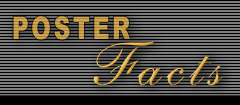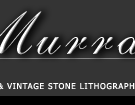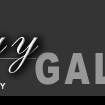 |
 |
 |
 |
 |
 |
|
What does "ORIGINAL" mean? Our Posters are from the original or first printing, which means that if a poster has the date 1930 in the margin, that is the year it was actually printed. What were these used for? Posters were used to advertise products, events and travel. They were placed on or in - walls of buildings - railway stations - sidewalk kiosks and other public places. How are they made? The primary printing technique is multi-color stone lithography, which was invented by a Parisian named Jules Cheret in the late 1800's. The process was done by hand and is very much an art form in itself. (The image had to be drawn on a separate piece of lithographic limestone for each color used). How do you price them? Vintage posters are priced, and appreciate very much like coins or stamps. There are limited quantities of any specific image. The prices are established by rarity and other factors. The desirability of an image and the market price are established at auction for a particular poster. Artist or subject can effect the price. Where do you find posters? Murray Galleries specializes in vintage and original poster art. As such we look for these as any antique dealer would for any other collectible item. Most are found in Europe at markets, printers, book and paper dealers, auctions and private collections. Why are they in such good condition? Posters have been collectibles since they were introduced in Europe in the 1890's. Many of them were never posted for several reasons; a new poster was issued for the product; the printer purposely printed an overrun to sell through a print dealer; the poster was part of an older collection. On Occasion, we buy a poster that has to be restored. That process is done by a person that specializes in paper restoration and is done to museum standards. What kind of paper is it on? The original posters are printed on a very thin paper, similar to newsprint. We back the original poster on linen fabric with a layer of acid-free barrier paper to help preserve the original image and protect further deterioration. Do posters increase in value? Vintage posters have been collected and offered at auction for many years. The recent increase in the visibility of poster art has driven demand to the highest levels ever. Some posters have tripled in value in the last several years. How do I know I am buying an original poster? As with any other product or service, the vendor you choose is very important. Education about the artwork should be available as well as some guarantee from the gallery as to authenticity and origin. Since these pieces were not originally produced as fine art, there were no certificates or numbering system used got identification. How are posters usually displayed? Posters are usually framed and hang just like a painting or any other printed wall art. In manyinstances the poster backing is trimmed to about .25" of the original paper and it is then attached to a piece of acid-free foam core board using linen tape as a hinge. The mounted poster can then be framed using a moulding of your choice. We recommend the use of plexiglas to reduce weight and the chance of damage due to breakage. Optional UV treated plexiglas can be used to reduce damage from sunlight. I've seen this poster before at different prices. Why is there a price variation? All products experience price variation from one source to another. The nature of antiques and other collectibles is such that this variation can be greater than with other products. As explained above, many factors affect the market price on artwork. When a person or organization originally finds a cache of a particulra image, they begin to distribute this item through the dealer community. Where the dealer is on this distribution chain and how close to the original source they are, as well as how long they have had the artwork affects the price. A poster can appreciate several times while in the possession of a dealer without their knowledge. Poster Conditions Condition A Designates a poster in very fine condition. The colors are fresh; no paper loss. There may be some slight blemish or tear, but this is very marginal and not noticeable. A+ is a flawless example of a poster rarely seen in such fine condition. A- indicates that there may be some slight dirt, fold, tear or bubble or other minor restoration, but most unobtrusive. Condition B Designates a poster in good condition. There might be some slight paper lost, but not in the image or in any crucial design area. If some restoration, it is not immediately evident. The lines and colors are good, although paper may have yellowed (light stained). B+ designates a poster in very good condition. B- is one in fairly good condition. The latter determination may be caused by heavier than normal light staining or one or two noticeable repairs. Condition C Designates a poster in fair condition. The light staining may be more pronounced, restorations, folds or flaking are more readily visible, and possibly some minor paper loss occurs. But the poster is otherwise intact, the image is clear, and the colors though possibly faded, are still faithful to the artist's intent.
Condition D Designates a poster in bad condition. A good part of such a poster may be missing, including some crucial image area: colors and lines so marred that a true appreciation of the artist's intent is difficult, if not impossible.
|
|
|
|
MURRAY GALLERIES ● 6701 PARK HEIGHTS AVENUE ● #2F ● BALTIMORE, MD 21215 ● 1-201-694-6491
|